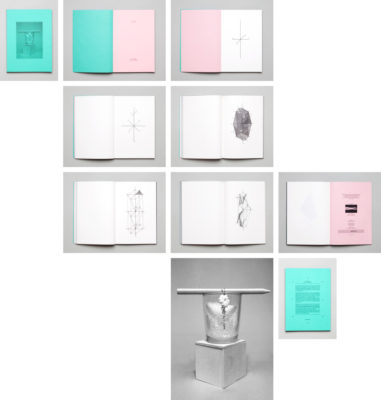-
×
 Rue Englelab, La révolution par les livres - Iran 1979 - 1983 - Hannah Darabi
1 × 48,00 €
Rue Englelab, La révolution par les livres - Iran 1979 - 1983 - Hannah Darabi
1 × 48,00 € -
×
 L’île de Reil - Karine Portal
1 × 10,00 €
L’île de Reil - Karine Portal
1 × 10,00 €
Sous-total : 58,00 €
 Rue Englelab, La révolution par les livres - Iran 1979 - 1983 - Hannah Darabi
Rue Englelab, La révolution par les livres - Iran 1979 - 1983 - Hannah Darabi
 L’île de Reil - Karine Portal
L’île de Reil - Karine Portal
Sous-total : 58,00 €
 Rue Englelab, La révolution par les livres - Iran 1979 - 1983 - Hannah Darabi
Rue Englelab, La révolution par les livres - Iran 1979 - 1983 - Hannah Darabi
 L’île de Reil - Karine Portal
L’île de Reil - Karine Portal
Sous-total : 58,00 €
22,00 €
The love crystallisation
En stock
As you see on the front cover of this issue, one can easily grow one’s own salt crystal at home, using a glass of salted water and a string attached to a pencil. Within few days the evaporation of water induces a shifting of matter from the water to the string as the less energetic way for sodium chloride to reorganise itself.

After discovering the principle of natural salt crystallisation near Salzburg were miners used to offer to tourists dry branches
covered with a shining deposit of crystals, French writer Stendhal in his essay ‘On Love’ (1822) used it as a metaphor to describe the ‘birth of love’ in human relationships.
According to Stendhal, the mental process when one sees flattering illusions in a new love, hiding the unattractive characteristics of this person, is quite similar to the sparkly diamonds covering a leafless piece of wood after the natural crystallisation of the salt.
Exploring the same phenomenon, Fabio Parizzi intended in this book to describe this chemical reaction with 50 sketches.
This visual attempt to understand the basic structure of matter in space and its physical behaviour embracies the fascination of mankind for the primary form of solid structure first described by Plato more than 2.300 years ago.
SALT CRYSTAL
Edited by
Philippe Desarzens
Crystal drawings and tattooed arm
Fabio Parizzi
148,5 / 204 mm, 53 pages
Xerox printed
Book edges printed in black
| Poids | 300 g |
|---|---|
| Dimensions | 14 × 20 cm |
Livre d'artiste
Cast of Characters A selection of 100 faces by artist Sam Porritt.
Livre d'artiste
Car, Character, Camera
Livre d'artiste
Lazy Painter – Angela Gjergjaj, Jordi Bucher and Mirco Petrini
Pictures by a robot vacuum cleaner
Dits & Écrits d'artistes
Aboukaïev est d’abord atteint de mélancolie comme certains oiseaux enivrés et dont le coeur ne veut plus s’arrêter de voler, de capituler face à l’horizon.
Livre d'artiste
Une publication de la Houle en plusieurs parties qui rassemble les interventions de différents artistes ou auteurs sur un même format – une feuille de papier au format A3.
Livre d'artiste
Blackywall est un livre attribué à Sihab Baik sur le travail de Claude Closky. Il est composé de courts textes publiés le long d’une sélection de pièces de l’artiste. Ces « critiques » sont alimentées par des citations d’Internet, trouvées par une série de recherches par mots-clés, programmées algorithmiquement pour suivre des sujets d’une manière rationnelle et objective.
Livre d'artiste
Regardant ces pages tracées dehors, on ne peut rien situer, ou pas grand chose.
Livre d'artiste
moj’am al arabeia – Farah Khelil & antoine lefebvre editions
Du rat de bibliothèque
Livre d'artiste
Le pectus excavatum, « thorax en entonnoir » est une malformation du thorax congénitale.
Livre d'artiste
Un cycle lunaire aux formes simples et épurées. En combinant 8 encres de couleur, Fanette Mellier propose une avancée sensible dans la lunaison.
Livre d'artiste
Un inventaire des artistes ayant volontairement détruit leurs propres œuvres